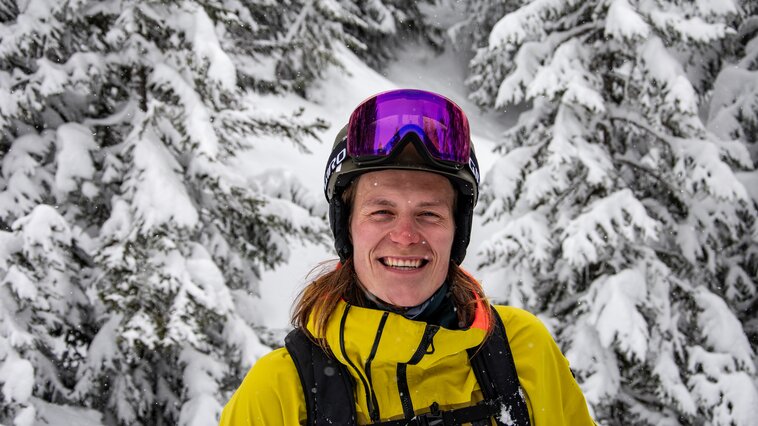My name is Øystein Aasheim, I’m a 27-year-old Norwegian skier spending this winter in Verbier. I compete on the FWQ-circuit in Europe, and thought I’d give you an insight into how I prepare for a season of competing, and how I prepare for the competitions themselves.
Øystein Aasheim in Verbier
I try to stay very active throughout the whole year. I love to go mountain-biking, I play football when the local season is on, and in the summers I work as a carpenter in Norway, meaning I’m physically active everyday. August is usually when I start training specifically towards skiing, and I set up a training program that lasts until Christmas. After Christmas, skiing is the main training activity.
Mixing endurance, core and strength
The training program consist of a combination of endurance, core, strength and coordination exercises, and a gradually increasing these from August towards Christmas. Now, I am no expert when it comes to training and physiology, and try to find help where I can to put the program together. This year for example, I got help from my fysio and a former racing trainer for alpine skiing. I find it easier to train when I know how to do it right, and why I do it the way I do it. Together we make a program that both effective and fun!
Here is an example of what a week of training would look like for me, mid preseason: two running interval sessions, usually around 1 hour. Two strength sessions, primarily on the legs and thighs, about 1-2 hours. This are also filled with core and coordination exercises between sets. The weekends I keep open to do what I want. This might be 10-20km of mountain biking on Saturday and Sunday, or it could be a football match one day and biking the other. Or I might end up with another strength session, and another running session. Its important to stay flexible so that I also keep having fun! I also do 30 minutes of core exercises everyday.
Time to head to the mountains!
After Christmas, I move down to the Alps and spend as many days on the mountain as possible. I ski in the piste, in the park, in the woods, on the mountain, I try to get every aspect and part of skiing into my week, with the idea that this will overall make me a better skier. This part really doesn’t feel like training, as skiing in all it’s forms is the best time ever.
As I edge closer to a competition, I naturally spend as much time as possible off-piste. And whenever I spend time on the mountain or off-piste, safety is of course priority number one. Staying updated on the avalanche reports, listening to whatever local people have to say about weather and conditions, making sure all equipment is working and the transceiver has enough battery. And of course that I know how to use it properly. Unnecessary risks are unnecessary.
Choosing a line
Choosing a line to ski on competition day is perhaps the hardest part, as there are so many things to take into consideration. In general I try to find a line that would be fun for me to ski, and fun for the judges to watch. A line that puts me on the limit, and a bit outside, my comfort zone. But not so much that I feel unsafe. In a freeride competition, safety comes first. The competition venue is under supervision in the weeks and days before the competition, so that the riders have the best possible knowledge about the snowpack. And there is always at least one day of face inspection prior to the competition, where the riders are able to inspect the face and find their line. We are at no point allowed into the face before we compete, meaning everyone gets one go at their line.
Below, watch the video of my line at the Nendaz Freeride, where I came in 3rd place.
See more
Conclusion
Like I said, there are a lot of things to take into consideration when you find a line. A line might be impossible due to snow conditions or poor visibility ; sometimes the weather changes during the day. There might be a lot of tracks on your line when it is your turn to ski. There might be hidden rocks under the snow, which are impossible to spot on face inspection. Sometimes you can spot a winning line first thing, and sometimes you study the face for hours without being able to put a line together. And sometimes, or I feel most of the time, you find two or three different options, and spend a lot of time dwelling on which one to ski.
All these things is what makes a freeride competition. The different snow conditions, the different faces, the different approaches and all the different lines you will see coming down the face. Add the fact that all the riders are skiing their line for the first time, and they all want to do good, and your gonna get a show you do not want to miss!










